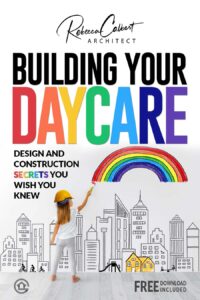Did you know a building layout can affect student performance by up to 25 percent?
If you think architects don’t consider building layout when they design, think again. And if you consider brick and mortar to be inconsequential in not only learning, but also in mood, teacher productivity, and concentration, you’re in for a big surprise.
Want to know more?
Here, you’ll find a discussion of the basic designs that can really transform your child care center into an escape every little one will love.
What Building Layout Designs to Consider
There are several designs to consider that may enhance learning, including lighting, color, and acoustics.
Lighting
Natural light increases cognizant awareness.
Our bodies are hardwired to react differently to night than to day. As a result, when more natural light is permitted to enter a care center, the children will have heightened senses and concentration.
If you don’t believe us, just think about how many times you’ve fallen asleep in a dimly lit room watching television. However, that doesn’t mean that just any old light will do. Studies show that different colored lighting has different effects.
For instance, blue is ideal for learning. As a result, utilizing designs with large windows and considering 6500 K lighting (which is a bluish white) may be a good idea.
Color
Roses are red, violets are blue and learning is . . . well, red, blue and green.
It depends what tasks are being undertaken.
Studies indicate that red, while able to create a desire to avoid tasks, can also stimulate performance on detailed-focus work. Blue is excellent for promoting creativity and green encourages self-reflection.
Therefore, painting a library green and blue would be an excellent way to create a calm atmosphere that fosters imagination and critical reading.
Separating your child care center into zones, then, is optimal for different activities. Match the activity type to the color to optimize learning and promote a healthier environment.
Acoustics
We all know if something raucous is occurring in the next room and the noises are infiltrating through the walls, it’s nearly impossible to gain a child’s attention. Part of the reason for this is that children are more sensitive to listening conditions than adults.
In fact, in a study conducted on over 300 children, it was found that students in classrooms with poor acoustics suffered impaired processing after reading and had more negative perceptions about their teacher and peers than those in rooms with better acoustics.
By designing the building layout so that the teacher’s voice is amplified and outside sounds are reduced, students will learn better. Sound control windows and doors, acoustical ceiling tiles and soft surfaces can be implemented to create high quality acoustics.
Design Really Matters
There are many other factors to consider when creating the layout for a child care center. Architectures should also contemplate circulation, individuality and spacial arrangements.
In 2007, the Department of Education found that 43 percent of schools had buildings that interfered with instruction in 2005. This is a real issue affecting facilities and care centers today.
In order to be effective, child care centers must provide a safe, educational and fun environment for children. Part of that process includes closely examining building layout.
If you’re beginning your own journey into child care, take a look at our post about choosing floor plans for your facility. It will help you make lists, prepare and choose the plan that’s right for learning.
-This article was written by Rebecca Calbert.
Rebecca is a licensed architect with over 30 years of experience. She owns and operates an architectural firm, Calbert Design Group, and educates her clients through the commercial real estate development process with online content at SaveOnBuilding.com. Rebecca’s “purpose” is to educate small business owners and protect them from what they don’t know.


